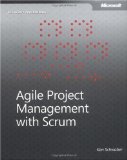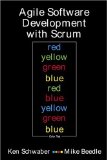I’ve read Thomas Friedman’s “Hot, Flat and Crowded”, and firmly believe this book belongs on the shelf of anyone involved in making buildings more energy-effective.
Mr Friedman’s previous bestseller, “The World is Flat”, discussed the changes to our world that enabled more and more people to participate in a global economy. “Hot, Flat and Crowded” is sort of a sequel to that book, although there is no need to have read it first (I haven’t).
Mr Friedman’s thesis is that as more and more people participate in the global economy (“flat”), the standards of living are increased everywhere and world population grows (“crowded”), while more and more people aspire to a western style of life, with its damning consequences to the environment (“hot”).
According to Mr Friedman, the small habit changes that we are all asked to pick up (changing incadescent lights to more efficient lights, turning off our TVs instead of leaving it on standby, etc), while commendable, are simply insufficient. There is nothing we can do invidually to prevent atmospheric CO2 levels from reaching dangerously high levels in this century. Instead, he proposes a series of measures nations should take, such as imposing carbon taxes, cap-and-trade schemes, and several regulatory laws on energy efficiency for vehicules and buildings. Only such drastic measures, he argues, will make a significant difference.
An entire chapter, in particular, is dedicated to what he calls an “energy internet”, in which he envisions how a network of appliances and utilities could cooperate to dramatically reduce the energy demand for buildings. Buildings, incidentally, represent about 40% of any nation’s energy demand, and have this annoying property of being long lived. Once a building is built, it will consume energy and water for the next 30-40 years, which makes it all the more important to build them right from the beginning.
Contrary to many “green” books, though, Mr Friedman gives more arguments in favour of “going green” than the obvious environmental ones. There are at least two other, less obvious reasons why we should work on reducing our energy demand and developing renewable energy sources:
- Current demand for oil finances petro-dictatorship all over the world, preventing many countries from achieving freedom and democracy.
- Many poor countries lack ready access to cheap and clean energy, preventing their further development.
The arguments Mr Friedman develops for these aspects of the problem are worth the price of the book alone, in my opinion. But the real eye-opener is the extensive discussion on the way utilities have traditionally worked and how they should work in the future. He doesn’t say that our homes and buildings should simply become more efficient; he says that by wiring together buildings, appliances and utilities together, we can escape from local optimums in energy efficiency and aim for much more important savings.
And that, of course, is one of the aims of this blog: to bring together information on how to achieve that vision. We definitely have the technology (we have had it for the past 30 years or so), we only need the economic incentives to work on this problem. And Mr Friedman provides several suggestions that governments the world over could and should adopt, suggestions that will, if implemented, leave us no choice but to build the infrastructure he describes.







